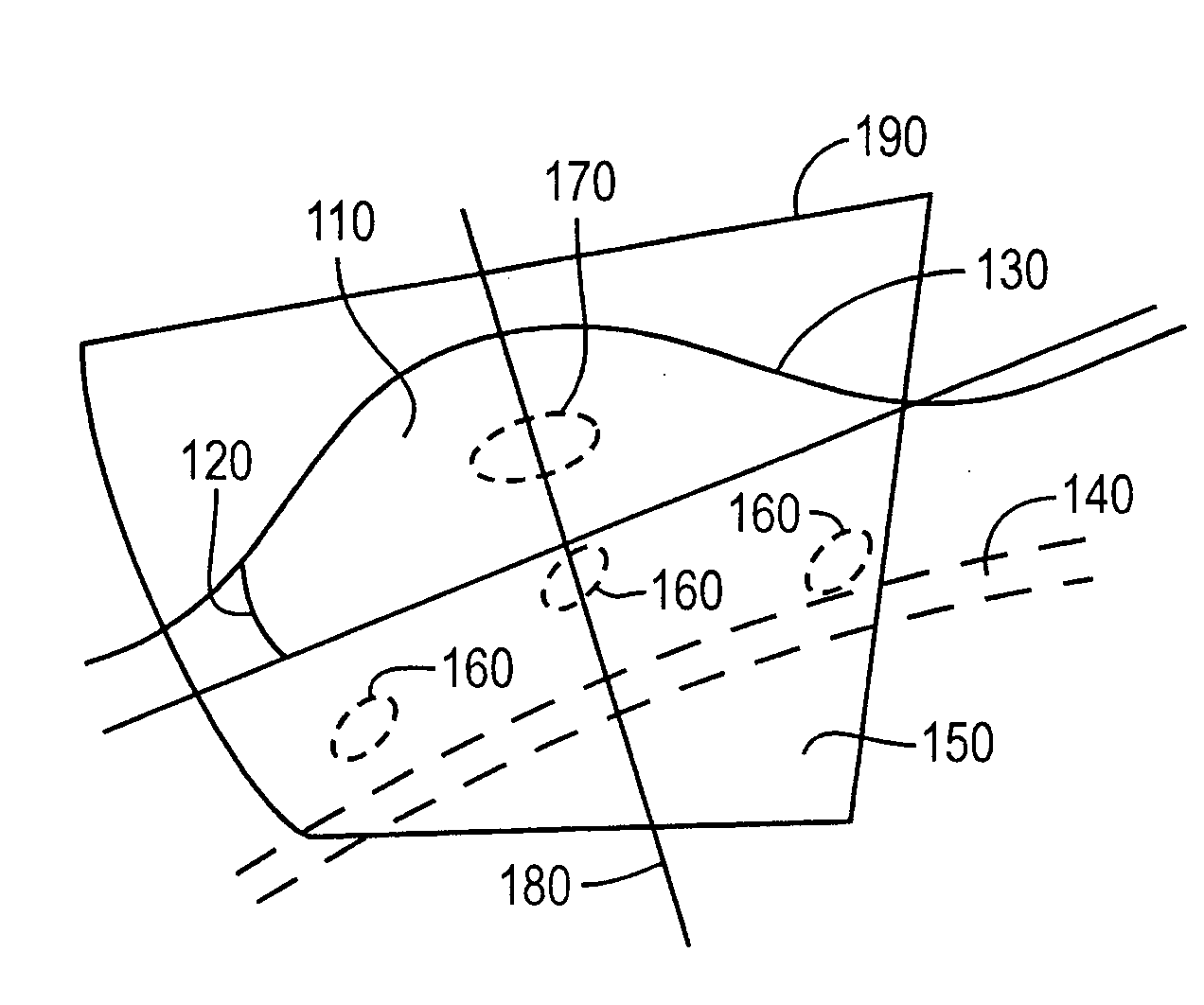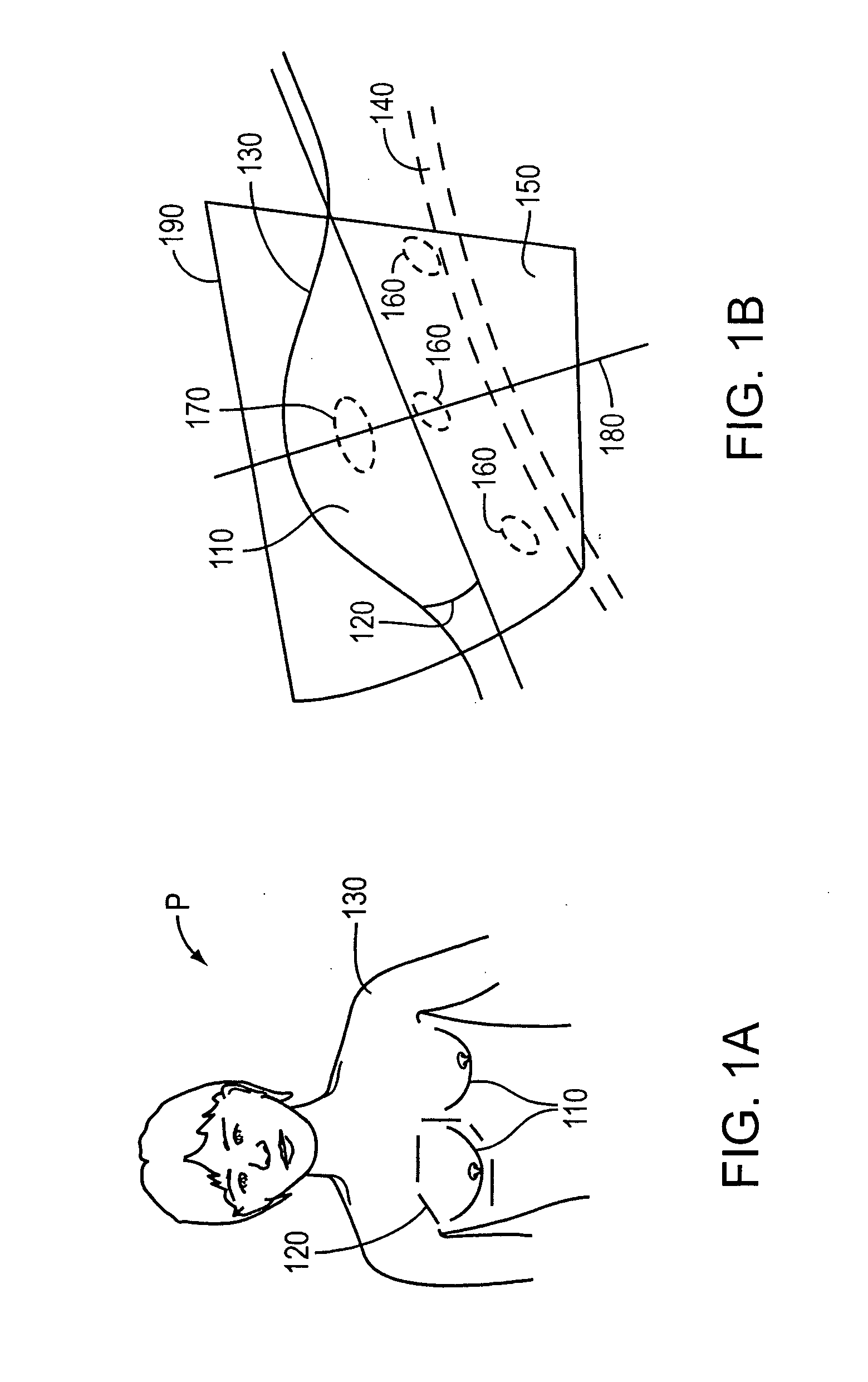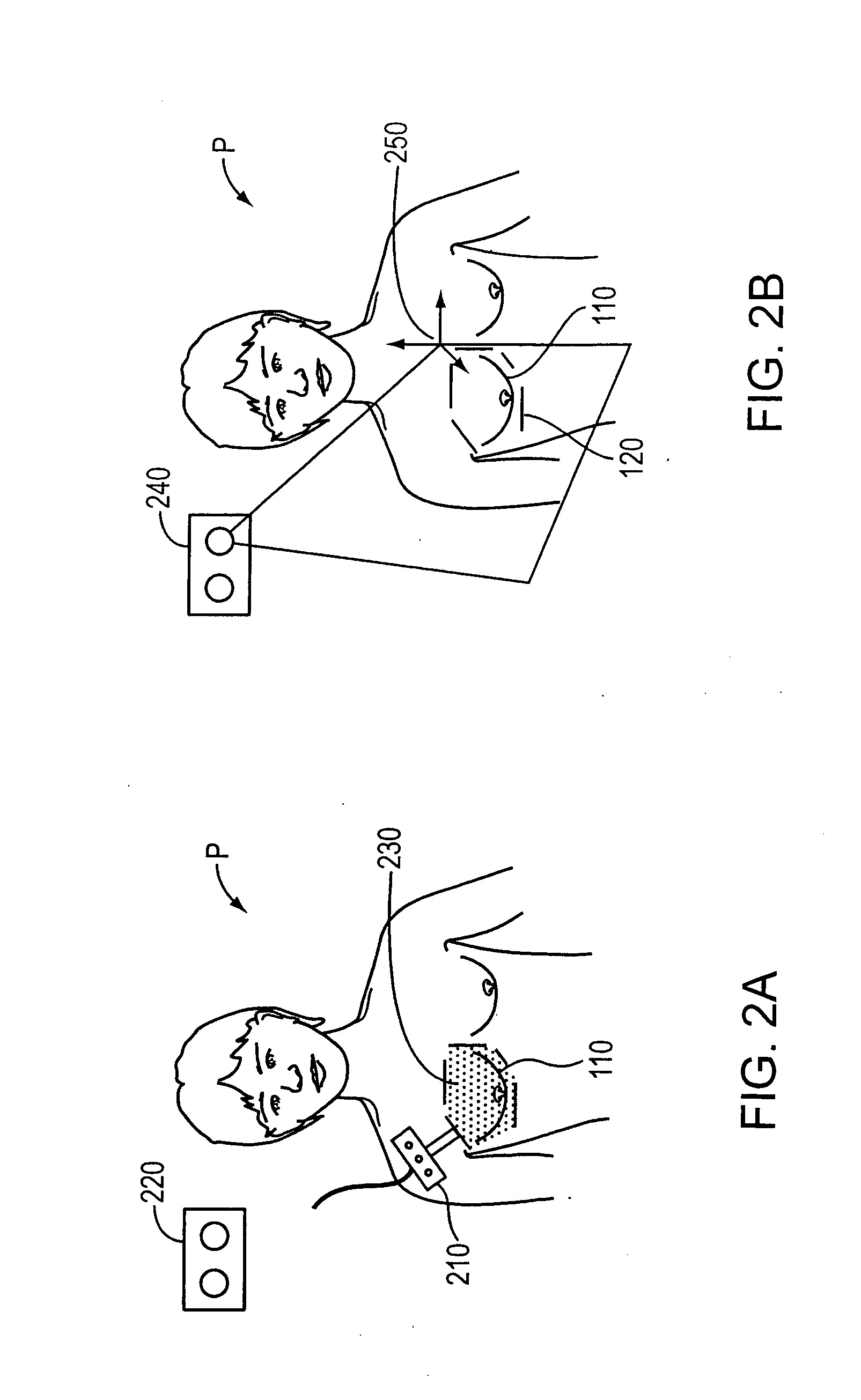System and method for patient setup for radiotherapy treatment
- Summary
- Abstract
- Description
- Claims
- Application Information
AI Technical Summary
Benefits of technology
Problems solved by technology
Method used
Image
Examples
Embodiment Construction
[0039]Throughout the following descriptions and examples, the invention is described in the context of positioning a patient in preparation for the delivery of radiation therapy to a breast. However, it is to be understood that the present invention may be applied in cases in which a patient is positioned in anticipation of receiving any position-based treatment and for any anatomical feature of the body, be it internal (e.g., a tumor within the breast surgical bed) or external (e.g., a melanoma on the skin).
[0040]In one embodiment, the invention generally involves four phases: receiving a previously defined treatment plan, obtaining patient surface information, obtaining internal anatomical information, and correcting the treatment plan. In some embodiments, however, the treatment plan can be developed just prior to treatment, even while the patient is in the treatment room awaiting delivery of radiotherapy. Although such an approach minimizes positioning errors between the plannin...
PUM
 Login to View More
Login to View More Abstract
Description
Claims
Application Information
 Login to View More
Login to View More - R&D
- Intellectual Property
- Life Sciences
- Materials
- Tech Scout
- Unparalleled Data Quality
- Higher Quality Content
- 60% Fewer Hallucinations
Browse by: Latest US Patents, China's latest patents, Technical Efficacy Thesaurus, Application Domain, Technology Topic, Popular Technical Reports.
© 2025 PatSnap. All rights reserved.Legal|Privacy policy|Modern Slavery Act Transparency Statement|Sitemap|About US| Contact US: help@patsnap.com



